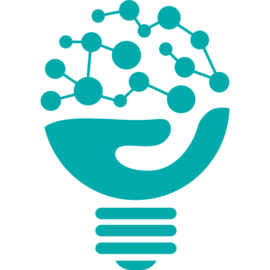OpenAI Just Unleashed “Deep Research”—And It's Quietly Changing How We Think, Work, and Compete
OpenAI Just Unleashed “Deep Research”—And AI Consultants like Theriault see how It's Quietly Changing How We Think, Work, and Compete in commerce


🔍 OpenAI’s Deep Research Agent: The Next-Level AI for Power Thinkers
By Claude Edwin Theriault, AI Consultant & Prompt Strategist
The pace of innovation in AI isn’t slowing down—it’s shifting into a whole new gear. And OpenAI’s latest move just confirmed it: introducing “Deep Research,” a new AI agent inside ChatGPT designed to help you think deeper, smarter, and more strategically.
Forget surface-level search. This is machine intelligence engineered for the kind of cognitive heavy lifting that turns curiosity into white papers, market intelligence into innovation pipelines, and brainstorming into billion-dollar strategy.
In the same way that Tesla redefined “car,” this new feature is set to redefine “research.” Let’s unpack how this works, why it matters, and how you can be among the first to wield it to gain a true competitive edge.
🚀 What Exactly Is Deep Research, and Why Now?
Deep Research is OpenAI’s answer to the mounting complexity of modern information landscapes.
While current AI systems give you decent summaries or creative outputs, Deep Research is trained to synthesize, structure, and organize long-form, multi-source data into digestible and actionable insights.
As of now, its outputs are text-only, but OpenAI has hinted at a future that includes:
- Embedded infographics and data visualizations
- Plug-ins for subscription-based research platforms
- Integration with proprietary and internal data sources
In short, imagine a research intern who never sleeps, can scan 1,000 PDFs in 30 seconds, and summarizes it all in clear, analytical language. Now you’re thinking on scale.

🧬 It’s Not Just a Chatbot — It’s a Thinking Partner
Most people treat ChatGPT like a search engine or a clever writing tool. But Deep Research is a paradigm shift toward machine-aided cognitive work.
This new agent is designed to:
- Conduct multi-hop reasoning across diverse sources
- Maintain contextual awareness over long conversations
- Organize results as structured research reports, not just bullet points
This is massive for:
- Researchers trying to distill academic or market intelligence
- Entrepreneurs validating product-market fit across verticals
- Consultants and strategists building investor decks or white-label playbooks
- Journalists who need to cross-check and triangulate narrative threads
Expect this to start eating into the work of traditional analysts—unless they evolve with it.

📡 What Comes Next: Visuals, APIs & Data Fusion
Currently, Deep Research is in its early release. It outputs text, but its roadmap is packed with upgrades that will push this from “cool” to mission-critical for enterprise and solo operators alike:
🌐 Coming Features:
- Embedded images and charts auto-generated to explain trends
- Access to specialized data sets: think academic journals, legal archives, niche SaaS
- API-based integration with internal company data
- Plug-ins for platforms like LexisNexis, Crunchbase, Bloomberg, and other high-value proprietary tools
It’s a quiet revolution. And for those watching closely, it’s easy to see that this is OpenAI preparing for the post-Google world, where research isn’t searched—it’s structured for you.
🧠 How to Start Using Deep Research Like a Power User
Here’s how to unlock its value before the masses catch on:
1. Start with a High-Level Prompt
Frame a complex inquiry like:
"Map out the future of regenerative medicine, key players, patent activity, and investment trends."
2. Break it into Parts
Ask Deep Research to build modular sections: context, players, risk analysis, etc.
3. Go Iterative
Treat this like a conversation over time. The more you refine, the sharper it becomes.
4. Pair with Human Insight
Use it as your thinking multiplier—not your replacement. What you do with the insight is still the differentiator.
🤖 Frequently Asked Questions
1. Is Deep Research available to everyone?
As of now, it’s being rolled out gradually to ChatGPT Plus users. Expect wider access as demand scales.
2. Did you cite sources?
Yes. One of its major features is pulling from multiple public web sources and citing them, ideal for research credibility.
3. Will it include real-time or live data?
While not live yet, OpenAI has announced plans to integrate live data streams and specialized platforms soon.
4. How does this compare to tools like Perplexity or Google Scholar?
Deep Research is more interactive and generative—it doesn’t just retrieve, it synthesizes and explains in evolving conversation form.
5. Can businesses integrate Deep Research into their internal systems?
Soon, yes. OpenAI is preparing enterprise-grade options that connect to internal databases, providing teams with AI-augmented insights without data leakage.

💡 Final Word: This Isn’t Just Research—It’s Reinvention
We’re witnessing the emergence of AI-co-piloted thinking. In the same way, the calculator reshaped math, and spreadsheets changed business ops. Deep Research is here to transform how we handle knowledge into a fluid, co-creative act between humans and machines.
Whether you’re a solopreneur, academic, consultant, or corporate leader, ignoring this tool is like choosing not to use the internet in 1995.
So, the question isn’t whether AI will replace researchers.
The question is: Are you ready to work with an intelligence that multiplies your capacity 100x—without needing coffee breaks?



